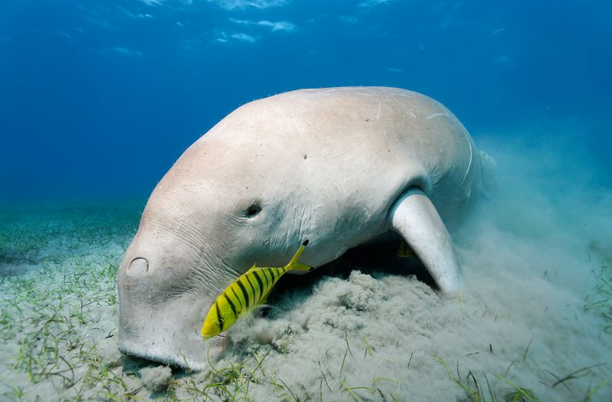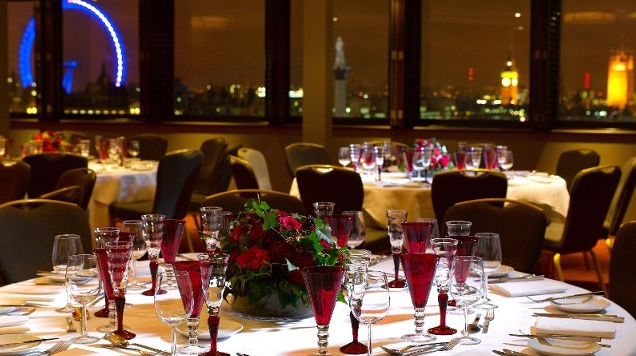Australia is a country, and continent, surrounded by the Indian
and Pacific oceans. Its major cities – Sydney, Brisbane, Melbourne,
Perth, Adelaide – are coastal, but its capital, Canberra, is inland and
nicknamed the "Bush Capital." The country is known for its Sydney Opera
House, Great Barrier Reef, the vast Outback (interior desert wilderness)
and unique animal species including kangaroos and duck-billed
platypuses.
Sydney, capital of New South Wales and one of Australia's largest cities, is best known for its harbourfront Opera House, with a distinctive sail-like design. Massive Darling Harbour and Circular Quay are hubs of waterside life, with the towering, arched Harbour Bridge and esteemed Royal Botanic Gardens nearby. Sydney Tower’s 268m glass viewing platform, the Skywalk, offers 360-degree views of the city, harbour and suburbs.
Area: 12,145 km²
Founded: January 26, 1788
Weather: 15°C, Wind S at 13 km/h, 88% Humidity
Local time: Thursday 6:16 PM
Getting there: 10 h 40 min flight.
Population: 4.293 million (2012)
Great Barrier Reef:
The Great Barrier Reef is the world's largest coral reef system composed of over 2,900 individual reefs and 900 islands stretching for over 2,300 kilometres (1,400 mi) over an area of approximately 344,400 square kilometres (133,000 sq mi).The reef is located in the Coral Sea, off the coast of Queensland, Australia.
The Great Barrier Reef can be seen from outer space and is the world's biggest single structure made by living organisms.This reef structure is composed of and built by billions of tiny organisms, known as coral polyps. It supports a wide diversity of life and was selected as a World Heritage Site in 1981. CNN labeled it one of the seven natural wonders of the world. The Queensland National Trust named it a state icon of Queensland.
A large part of the reef is protected by the Great Barrier Reef Marine Park, which helps to limit the impact of human use, such as fishing and tourism. Other environmental pressures on the reef and its ecosystem include runoff, climate change accompanied by mass coral bleaching, and cyclic population outbreaks of the crown-of-thorns starfish. According to a study published in October 2012 by the Proceedings of the National Academy of Sciences, the reef has lost more than half its coral cover since 1985.
The Great Barrier Reef has long been known to and used by the Aboriginal Australian and Torres Strait Islander peoples, and is an important part of local groups' cultures and spirituality. The reef is a very popular destination for tourists, especially in the Whitsunday Islands and Cairns regions. Tourism is an important economic activity for the region, generating over $3 billion per year.
In November 2014, Google launched Google Underwater Street View in 3D of the Great Barrier Reef.
World Heritage Committee
At its 36th meeting in June 2012, the World Heritage Committee considered the state of conservation of the Great Barrier Reef World Heritage Area and noted a report from the World Heritage Centre/IUCN reactive monitoring mission that visited Australia earlier that year.
This report recognised that Australia's management of the Great Barrier Reef World Heritage Area is in many respects international best practice. The Committee handed down a decision on Australia's management of the reef - including recommendations to further manage and protect the reef.
Australia provided updated reports on the state of conservation of the property, and also on the implementation of the Committee's decisions in February 2013, January 2014 and January 2015.
World Heritage Committee
At its 36th meeting in June 2012, the World Heritage Committee considered the state of conservation of the Great Barrier Reef World Heritage Area and noted a report from the World Heritage Centre/IUCN reactive monitoring mission that visited Australia earlier that year.
This report recognised that Australia's management of the Great Barrier Reef World Heritage Area is in many respects international best practice. The Committee handed down a decision on Australia's management of the reef - including recommendations to further manage and protect the reef.
Australia provided updated reports on the state of conservation of the property, and also on the implementation of the Committee's decisions in February 2013, January 2014 and January 2015.
Geology and geography:
The Great Barrier Reef is a distinct feature of the East Australian Cordillera division. It includes the smaller Murray Islands. It reaches from Torres Strait (between Bramble Cay, its northernmost island, and the south coast of Papua New Guinea) in the north to the unnamed passage between Lady Elliot Island (its southernmost island) and Fraser Island in the south. Lady Elliot Island is located 1,915 km (1,190 mi) southeast of Bramble Cay as the crow flies.
The Plate tectonic theory indicates Australia has moved northwards at a rate of 7 cm (2.8 in) per year, starting during the Cenozoic. Eastern Australia experienced a period of tectonic uplift, which moved the drainage divide in Queensland 400 km (250 mi) inland. Also during this time, Queensland experienced volcanic eruptions leading to central and shield volcanoes and basalt flows. Some of these became high islands. After the Coral Sea Basin formed, coral reefs began to grow in the Basin, but until about 25 million years ago, northern Queensland was still in temperate waters south of the tropics—too cool to support coral growth. The Great Barrier Reef's development history is complex; after Queensland drifted into tropical waters, it was largely influenced by reef growth and decline as sea level changed.
Reefs can increase in diameter by 1 to 3 centimetres (0.39 to 1.18 in) per year, and grow vertically anywhere from 1 to 25 cm (0.39 to 9.84 in) per year; however, they grow only above a depth of 150 metres (490 ft) due to their need for sunlight, and cannot grow above sea level. When Queensland edged into tropical waters 24 million years ago, some coral grew, but a sedimentation regime quickly developed with erosion of the Great Dividing Range; creating river deltas, oozes and turbidites, unsuitable conditions for coral growth. 10 million years ago, the sea level significantly lowered, which further enabled sedimentation. The reef's substrate may have needed to build up from the sediment until its edge was too far away for suspended sediments to inhibit coral growth. In addition, approximately 400,000 years ago there was a particularly warm interglacial period with higher sea levels and a 4 °C (7 °F) water temperature change.
Pollution
Another key threat faced by the Great Barrier Reef is pollution and declining water quality. The rivers of north eastern Australia pollute the Reef during tropical flood events. Over 90% of this pollution comes from farm runoff. 80% of the land adjacent to the Great Barrier Reef is used for farming including intensive cropping of sugar cane, and major beef cattle grazing. Farming practices damage the reef due to overgrazing, increased run-off of agricultural sediments, nutrients and chemicals including fertilizers, herbicides and pesticides representing a major health risk for the coral and biodiversity of the reefs.
Loss of coastal wetland
The runoff problem is exacerbated by the loss of coastal wetlands which act as a natural filter for toxins and help deposit sediment. It is thought that the poor water quality is due to increased light and oxygen competition from algae.
Eutrophication
Farming fertilizer runoff release nitrogen, phosphorus, and potassium into the oceanic ecosystem, these limiting nutrients cause massive algal growth which leads to depletion in oxygen available for other creatures which decreases the biodiversity in the affected areas, altering the species composition. A study by Katharina Fabricius and Glen Death of Australian Institute of Marine Science found that hard corals numbers were almost double on reefs that were far from agricultural areas.
Fertilisers also increase the amount of phytoplankton available for the crown-of-thorns starfish larvae to consume. A study showed that a doubling of the chlorophyll in the water leads to a tenfold increase in the crown-of-thorns starfish larvae’s survival rate.
Sediment runoff
Sediment runoff from farming carries chemicals into the reef environment also reduces the amount of light available to the corals decreasing their ability to extract energy from their environment.
Pesticides
Pesticides used in farming are made up of heavy metals such as lead, mercury, arsenic and other toxins are released into the wider environment due to erosion of farm soil which have detrimental effect on the coral.
Pollution from mining
Mining company Queensland Nickel discharged nitrate-laden water into the Great Barrier Reef in 2009 and 2011 – on the later occasion releasing 516 tonnes (508 long tons; 569 short tons) of waste water. The Great Barrier Reef Marine Park Authority (GBRMPA) stated "We have strongly encouraged the company to investigate options that do not entail releasing the material to the environment and to develop a management plan to eliminate this potential hazard; however, GBRMPA does not have legislative control over how the Yabulu tailings dam is managed".
Threats:
Human Threats:
There are several threats to the Great Barrier Reef that humans have caused. One of these threats is oil spills from large oil tankers. Another threat is over fishing by the commercial fishing industries. A third threat is people swimming, and walking on the coral, which damages it.
Natural Threats:
One of the natural threats is coral bleaching which is caused by the increase in water temperature in the Great Barrier Reef. Another natural threat is caused by the Crown of Thorns Sea Star, which is a star fish that eats the coral in the Great Barrier Reef.
One of the natural threats is coral bleaching which is caused by the increase in water temperature in the Great Barrier Reef. Another natural threat is caused by the Crown of Thorns Sea Star, which is a star fish that eats the coral in the Great Barrier Reef.
Common Animals:
Fish: There are over 1,500 species of fish in the Great Barrier Reef. A few common fish in the Great Barrier Reef include the angel fish, parrot fish, butterfly fish, clown fish, groupers, and sharks. The most common species of shark is the White-tipped Reef Shark.
Fish: There are over 1,500 species of fish in the Great Barrier Reef. A few common fish in the Great Barrier Reef include the angel fish, parrot fish, butterfly fish, clown fish, groupers, and sharks. The most common species of shark is the White-tipped Reef Shark.
Mammals: There
are many mammals in the Great Barrier Reef. These include mostly whales
and dolphins. The most common whales and dolphins are the Humpback
Whales, the Dwarf-minke Whales, and the Bottlenose Dolphins. The Great
Barrier Reef is a breeding ground for Humpback Whales. Another mammal in
the Great Barrier Reef is the Dugong. The Dugong is an endangered
species.
Sea Turtles:
There are six species of sea turtles in the Great Barrier Reef. These
include the Green, Leatherback, Hawksbill, Loggerhead, Flatback and
Olive Ridley turtles. The Green Turtle is an endangered species in the
Great Barrier Reef.
Plants: A few of the plants in the Great Barrier Reef are marine algae, seaweed, and sea grass.
Coral:
Coral makes up the structure of the Great Barrier Reef. There are 400
species of coral in the reef. There are 2 types of coral: hard coral and
soft coral. Hard coral usually exists in the shallower parts of the
reef, and soft coral is usually in the deeper parts. Hard coral is stiff
and rigid. One common type of hard coral is the Staghorn Coral. Soft
Coral is squishy and leathery. Soft coral is important
because it is where marine algae lives. Marine algae is a major food
source in the Great Barrier Reef. One common type of soft coral is the
Cauliflower Coral.





















